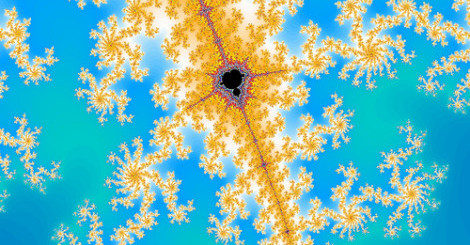
 )
)Exhibit A: During a beach vacation with my extended family, I repeatedly heard my mom, my sister and my wife discussing the complexities of food shopping. These are three intelligent women, each with a Masters’ degree in their respective field, each with a minimum of 10 years’ experience buying and preparing food for themselves and at least some experience doing so for a family, and yet all three find this basic task increasingly overwhelming. Optimizing for sustainability, personal cost, global resource consumption, individual dietary needs, and overall nutrition and health in the presence of uncertainty about the relative and absolute merits of different foods and diets is a nontrivial problem. The space of possible foods over which to perform that optimization is expanding. Then, throw in questions like “Could you figure out which food(s) is causing our family’s eczema?” And by the way, serve it with appealing presentation and make it taste good to a wide assortment of palates, will you?
Exhibit B: The Mandelbrot set, a fractal famous enough to have calendars and mall kiosks devoted to it, is a powerful bit of mathematics. It divides all numbers into two groups; numbers are either in the set or not. It is defined unambiguously; no number straddles the line between inside and out. Yet its border is fascinatingly, maddeningly complex. Mandelbrot numbers and outsiders intermingle; they can be found arbitrarily close together. Even more devilish, it might take an infinite amount of time to decide whether certain numbers of belong or not. In order to render those posters and coffee table books, concessions have to be made to printing deadlines and best guesses are offered in some cases.
Exhibit C: Answers in Genesis opened its Ark Encounter theme park recently, attracting a lot of attention in science & faith conversations. While I have a different understanding of the history of life on earth than what the park offers, I can certainly appreciate the appeal of this version. The encounter provides a complete narrative from the beginning to the present with no open questions and no uncertainty. God’s role isn’t merely central, it is demonstrably essential. The answers can be simplified enough to explain to children while remaining satisfying to adults. The ad hoc nature of the solution allows it to be applied to any and all future observations. It’s the all-inclusive resort (or cruise) of origins explanations, which makes it a perfect fit for a family theme park.
Exhibit D: My freshman roommate had an idiosyncratic approach to statistical forecasts: everything was a 50/50 proposition, since it would either happen or it wouldn’t.

 )
)Exhibit E: I recently watched Steve Jobs, the Danny Boyle/Aaron Sorkin/Michael Fassbender version of the Apple founder’s life. Chronologically, Jobs’ story is broken down into three vignettes about the final preparations for three notable product announcements. The story also highlights several key relationships, the most famous of which is the partnership / rivalry between Steves Jobs and Wozniak. The film advances the popular notion (possibly an oversimplification) that each Steve represented an opposite extreme of design philosophy. Jobs advocated for closed ecosystems in which everything was decided during design so the consumer could simply use a product for its specific, intended purpose. Wozniak favored open hardware and software which maximized user options. These ideological disputes are dramatized via the competing sales of the Apple IIe with its generous array of expansion ports and different flavors of Macintosh–original and later iMac–with their minimal extensibility. While Wozniak-style democratization succeeded early by appealing to the most obvious audience for computers–hobbyists and tinkerers–the film suggests Jobs better understood what the general public wants and simply needed time to reach that significantly larger, but unlikely to adopt early, market.
Confession: My own personality leans strongly in the Wozniak direction, not just when it comes to computers but across a variety of pursuits. I want to make informed decisions, I want to preserve options for future considerations, I want to understand, and I want to extend the same opportunities to everyone else. I can rationalize these personal preferences in the name of democracy, transparency and freedom. Conversely, I fear I am hopelessly pursuing absolute control over my own life, vainly believing I can and do know best, while simultaneously disclaiming any and all responsibility for anyone else’s choices.
Practically, our time and attention are limited; we all out-source some amount of decision-making, knowingly and not. Having to absorb and process all of the information about even a simple topic like food can be genuinely taxing to those limited cognitive resources. I have recently begun to suspect that my mental health is getting a little frayed at the edges from trying to drink from too many firehoses on too many topics. I am learning to appreciate the value of simplicity, both in what I consume and what I present to others for consumption. At the same time, I am wary of abdicating responsibility where it obtains, of over-simplifying when it is unhelpful, and of embracing equal time and middle ground when decisiveness is required.
The standard approach to complexity is eschew black-and-white dichotomies as too simple and embrace the gray of nuance. That’s never completely sat well with me. While his approach lacked mathematical rigor, my roommate was onto something with his 50/50 notion; decisions have to be made and they often resolve to binary choices. But perhaps those binaries are fractal. The boundaries are complex, with black scenarios and white scenarios existing arbitrarily close together. At a distance, this intricacy may appear to average out to gray, but with sufficient resolution distinctions emerge. Sometimes we may have to decide before we know enough to be certain, but that doesn’t mean an unambiguous answer is nonexistent.
It’s tempting to end with that abstract picture and leave applications as an exercise to the reader, but doing so feels like punting on complexity for someone else to tackle. That doesn’t help our weary food shoppers. If nutrition is complex in a fractal way, if healthy eating choices look awfully similar to unhealthy ones, maybe we can reduce shoppers’ cognitive burdens and do more sorting upstream. Recent bans on trans fat are a good example; if they have significant harm with little benefit, get rid of them. By contrast, many dietary concerns are resolved with labeling and letting the consumer figure it out. Instead of lobbying for more and more labels, we probably need to lobby for decisions. If genetically modified foods are individually safe, permit them in the food supply and move on, and if they aren’t then keep them out. If certain foods should be eaten sparingly, maybe have them stocked proportionately so that our grocery stores themselves reflect how our diets should be balanced. If certain foods should be eaten frequently, those are the foods we should be subsidizing so that they are abundant and inexpensive. And so on. This isn’t the place for an exhaustive list, but these suggestions indicate the direction I think we should move in to help improve everyone’s nutritional (and mental) health.
How do you simplify the complexities of your discipline to benefit others? Do you worry about oversimplifying to the point of being misleading?
Andy has worn many hats in his life. He knows this is a dreadfully clichéd notion, but since it is also literally true he uses it anyway. Among his current metaphorical hats: husband of one wife, father of two teenagers, reader of science fiction and science fact, enthusiast of contemporary symphonic music, and chief science officer. Previous metaphorical hats include: comp bio postdoc, molecular biology grad student, InterVarsity chapter president (that one came with a literal hat), music store clerk, house painter, and mosquito trapper. Among his more unique literal hats: British bobby, captain’s hats (of varying levels of authenticity) of several specific vessels, a deerstalker from 221B Baker St, and a railroad engineer’s cap. His monthly Science in Review is drawn from his weekly Science Corner posts — Wednesdays, 8am (Eastern) on the Emerging Scholars Network Blog. His book Faith across the Multiverse is available from Hendrickson.

Leave a Reply